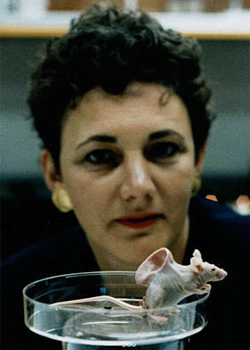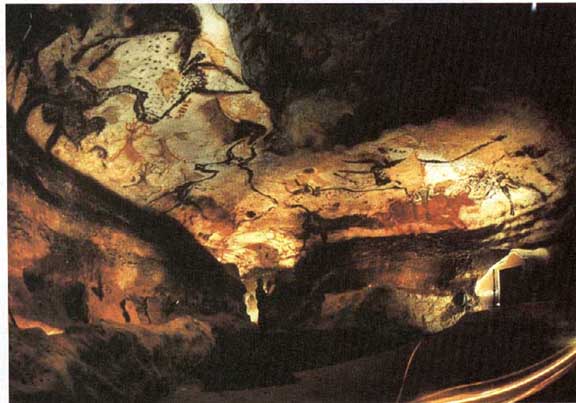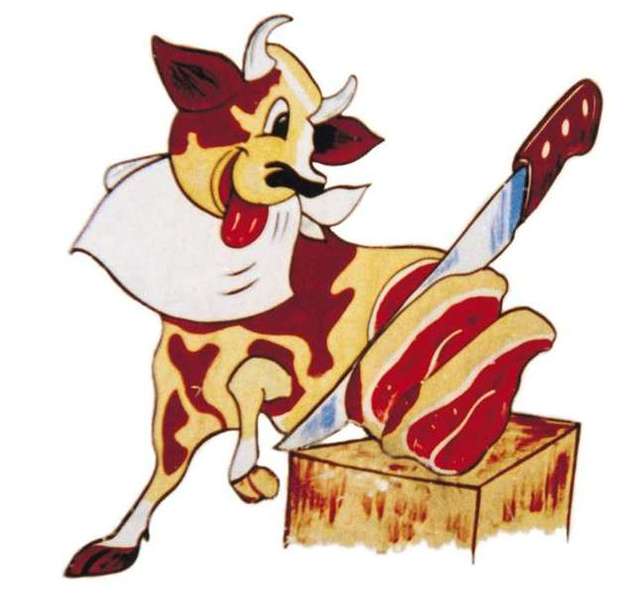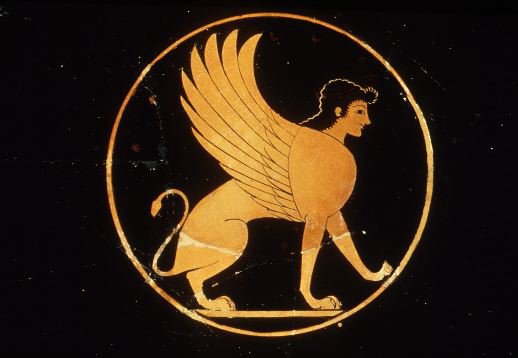I recently discovered (welcome to the wide world, child!) I'm not the only person interested in the relations between humans and animals in a serious way (as opposed to just a cute-and-fuzzy way, a creepy way, an anthropomorphic way, or a strictly environmentalist/activist way). There's a whole inter-disciplinary approach evolving known as anthrozoology. And then there's Posthumanism. Serious people are taking scholarly approaches to understanding the ways humans and animals interact (or don't). And not just in the present, but all across the spectrum of time.
There have been chimeras since we first dreamed.
Now, humans and non-humans are blending in laboratories and operating rooms:

what will that mean for the future of both?
Animals and humans have been bonding and hunting one another for our entire history: how has that shaped us all?

What are our ethical obligations to our fellow creatures, if any? Do non-humans have ethics?
Domination is a theme: humans tend to see and act out domination schemes wherever they go, amongst ourselves and in our wider environment.

The ethics, politics and effects of our habitual domination of non-humans, and how it is related to how we dominate each other is another area of this discussion.
How to keep this anthropocentric view out of our observations of non-humans?
Are we different from animals?

Are we like? Which is it that is most interesting? It just goes on and on!
As it should.
All this is making my brain unfold like a flower in spring! I have many friends who love animals, a few who are vegetarians or vegans, and even one or two activists in the bunch, but this level of discussion has been outside my experience 'til now. I've always felt a little odd, or at least that others considered me to be odd, maybe obsessed. Why animals? Why not starving human children in Africa? Why swim against the stream?
We all have our areas of focus. For some, it's sports, or their religious beliefs, or philately, or literacy. For me, it has always been animals.
Still evolving is my growing awareness of how integral animals are throughout art history. I know I wrote about this before, but this keeps unfolding in new ways for me. Artists are also taking the relationships between humans and animals very seriously, examining the various types and levels of interactions, and their implications. We cannot be true humans without the other animals. They are part of our every language, our religions, our cultural beliefs, mores and taboos, our symbolism, our dreams and our families. The very fact that we take these relationships so much for granted is an indication of how deeply they are rooted.

I just recieved a book called Becoming Animal, which explores through various artists' work "the shifting boundaries between animal and human". I'm searching and finding all sorts of stuff on the web. It's all bubbling and mixing with my own experiences and understanding, and is powering up the creative engine.
H and I went to France last month (oh. my. gawrsh!) Among other natural wonders, we walked through les Abattoirs, a modern art museum in Toulouse. Many of the exhibits used some form of projection as part of the pieces. It got me thinking about other ways to layer up the images I have in mind, other ways to illustrate the Parallel Universes co-existing. H is moving his office, and there are a few leftover computer monitors. I have a clunky home-made lightbox and an opaque projector that have been collecting dust in my studio for years. Things are starting to glow with possibilities I have never considered before in my own work.
______________________________
Meanwhile, I continue work on this year's holiday cards, some graphics for H's business, a pet portrait that got squeezed in (and which I'm doing in a completely different technique than I've used in the past - more on that as it develops) (which is to say, it looks too horrible to share right now! ;P )
I can't show you the holiday cards, but you can see some of the graphics (logo and page design) on H's website, Blue Future. I'm also doing a logotype for a new product he has developed using a flexible material to make squishably compressible water filter systems for remote or emergency settings. At the moment, the choice is between these two versions:
or
So, that's what's up at the moment. I hope your spring is behaving better than ours, by the way. I, for one, am really done with RAIN!!! At least for a few months, or at least during the day! *sigh*
--
"I shall pass through this world but once. Any good thing therefore that I can do, or any kindness that I can show to any [fellow creature], let me do it now." ~Etienne de Grellet [and me]




Interesting post, Xan. I can't wait to see the work you create for the show. I think it may be worth making a trip up to your rainy side of the state. I love the ideas you're having about showing the connection between people and animals, without getting all Disney on us.
ReplyDeleteNow that you mention it, there are almost as many ways to relate to animals as there are people. Some people see other living things as "things" to exploit, while others think of them as family - and all points in between.
I think there's a strong genetic component to it - I've noticed that people who enjoy the company of other animals usually have at least one parent with the same interests. I know this could have something to do with the way people are raised, but it does make sense. Only a few animals have chosen to make their lives with people (but of course we always take credit for the "domestication" of these few critters, as though it was all our idea...) So, if a few scavenging wolves and wild sheep and bovines evolved a subspecies that was tolerant of our company, even to the point where they truly can't live without us, why wouldn't there be people who evolved to accept wolves and sheep and cows as pack members, too? It has to go both ways for it to work at all. Although I agree that for some people it's all about control, and not about sharing a livelihood.
Since genetic diversity works the way it does, there must be people who are born without the cat-loving gene, just as there are cats that don't care much for people.
I think I digressed from your point. Often happens.... Thanks for a very thoughtful post. Get working on those new paintings - I can't wait to see them.
Jonni, you raise the fascinating question of co-evolution. Living with humans can be a mixed bag, that's for sure, but for cats and dogs as species, it has been a pretty good strategy to ensure survival.
ReplyDeleteFor domestic food animals, too, but that's such a weird deal. Individuals live short, often horribly narrow, lives, die by some awful method or another, but the species lives on because we want to eat them. (Well, I don't, but most humans do.)
Then again, what's a "natural" life like for a prey animal? Lucky to live long enough to reproduce, then die at the teeth or claws of a predator to be eaten. Hm.
Living with greyhounds from the racing industry (rejects or post-production culls), I'm reminded daily of the by-products of the industrial approach to human-animal relations. Yet, I know so many people who have taken these leftovers and made them family members. Recycled them, if you will. And then there's the dilemma of the ethical vegan who must feed her carnivore adoptees!
As I said, it goes on and on! You didn't digress; you helped make my point!
It's exciting to see the wheels whirring in your brain through this journalling. It's interesting that you have discovered the time element--that this issue of relationship between creatures (animals and humans) has been explored for centuries, or at least depicted. The web can be a treasure trove, for sure! Happy hunting, so to speak!
ReplyDeleteSo true. And, speaking of time, we should remember that for thousands of years even the prey animals that chose to live with us had pretty good lives. We protected them, moved them to better pastures, fed them during the winter, even let some of them sleep in the house. The whole factory farming thing is a very new idea, which goes along with a lot of the industrialization of the environment, for the profit of a few and the degradation of the many (including most humans). But don't let me get started on that...
ReplyDeleteBack to the issue of art, more or less - I think all art is a little bit magical. Art is a thought that has been given a physical dimension, either in written words, or song, or a painting or sculpture. And it is my belief that once a thought has been brought into the world, it's there forever. Like the Nazis - you might win the war, but the idea festers in wild places forever, like the last few spores of mold...
And I bring that up because I sometimes see art created by animal loving, factory farm-hating artists that includes a lot of blood and gore in it, instead of celebrating the artist's own compassion and relationship with other species. Since art has magic in it, this seems to be a way of giving the thought (factory farming is OK) more power.
Thanks, Mom (Jean, for those of you outside the family). :) The internet is wide and deep, as I keep saying lately.
ReplyDeleteJonni, I'm not sure that the individual quality of life for domesticated food animals was all that great before industrialization, either. Beware the romantic trap of "the noble savage"! Still, probably better than wild life, all in all. Or at least comparable. A niche anyway.
Which is not to say that I don't agree with you about the horrors and costs of industrial agriculture (and the rest of the environment).
It's interesting, your point about gory activist-type art. I once participated in a collaborative piece in which my half was a bucolic representation of a calf in a flowery spring meadow, and the other half was that same calf represented as meat, sectioned up like a butcher's chart, with gore and collaged images to build on that idea. It wasn't me, at all. I'm not sure it's wrong to put the realities of meat eating graphically into people's faces (the will to un-know such things is so strong!), but it's not my approach, I guess.
Your thought about the endurance of ideas-made-art is reminding me of the cave art we saw in France a few weeks ago. There were hundreds of hand silhouettes, most with one or more fingers missing or bent down into the hand. Hands like this appear all over the world, made over thousands of years, then ... no more. What did they mean? What were they about? The physical dimension remains, but the idea has floated loose from it, maybe finding its way into other forms we don't recognize as related anymore.
In this context (of art, humans, non-humans), the hands have been haunting me lately. Where there are no other monkeys or apes, hands do seem pretty unique. Or, well, maybe not, since rodents, weasel types, raccoons, all have hand-like paws. But they do work differently. Maybe those hand silhouettes were a way of saying something about "us, not those other animals", an early way of separating ourselves, or distinguishing ourselves, from all the other life competing with us for survival.
Still going on!